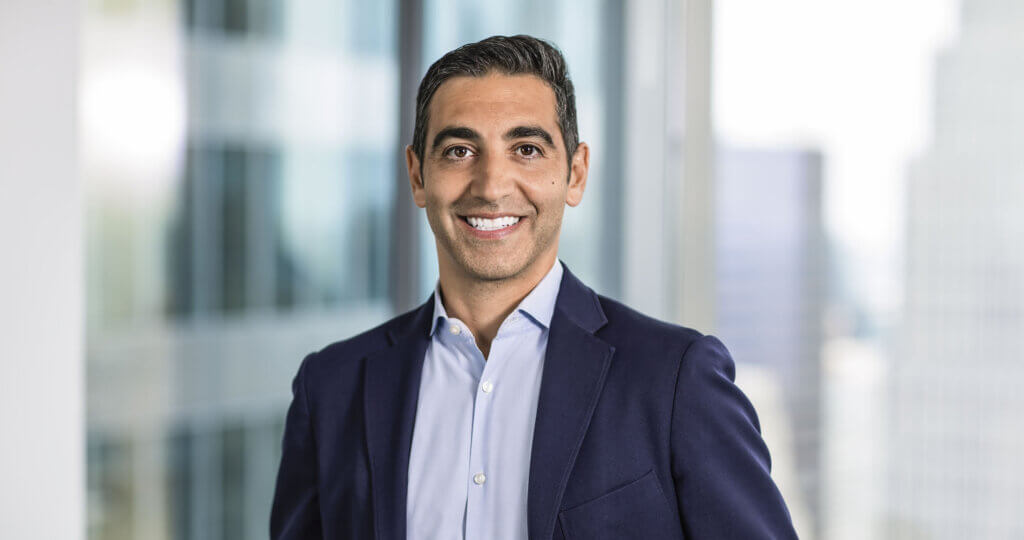Oakmark Equity and Income Fund - Investor Class
Average Annual Total Returns 12/31/12
Since Inception 08/04/99 10.50%
10-year 8.26%
5-year 3.84%
1-year 9.05%
3-month 1.14%
Gross Expense Ratio as of 09/30/12 was 0.78%
Past performance is no guarantee of future results. The performance data quoted represents past performance. Current performance may be lower or higher than the performance data quoted. The investment return and principal value vary so that an investor’s shares when redeemed may be worth more or less than the original cost. To obtain the most recent month-end performance data, view it here.
Quarter Review
U.S. equity markets followed up a strong September quarter with a choppy and unproductive December period. Fixed-income returns were modest as well. During the past quarter, the Equity and Income Fund earned 1%, roughly equivalent to the return for the Lipper Balanced Fund Index, the Fund’s performance benchmark. For the calendar year, the Fund returned 9% versus the Lipper index’s 12%. Since the Fund’s inception in 1995, the annualized compound rate of return is 11% while the corresponding return for the Lipper index is 7%.
The stocks with the greatest return contribution in the quarter were Rockwell Automation, Flowserve, Varian Medical Systems, Dover and Lear. The largest detractors were Devon Energy, Apache, Baker Hughes, EnCana and Philip Morris International. All of the detractors except Philip Morris are in the energy industry, which continues to suffer from the oversupply of natural gas. Detractors from return for the calendar year were Walter Energy, Devon Energy, Staples, Apache and Republic Services (sold). The largest 12-month contributors to portfolio return were Diageo, Flowserve, TJX (sold), MasterCard and Scripps Networks Interactive.
Although comfortably profitable for investors, calendar 2012 was relatively disappointing for the Fund. A variety of factors contributed to this outcome. Perhaps foremost was our belief that income had become overpriced, whether in bonds or higher-yielding equities. Financial repression has continued much longer than we thought possible, and this has, in our opinion, encouraged investors to overpay for income in every security type. Also important was our failure to foresee that exploration and production company stocks would become mere proxies for the price movements of natural gas, despite their attractive valuations. Finally, the Fund began calendar 2012 with little exposure to financial service stocks, a group that performed strongly. On the positive side, the Fund’s consumer and industrial holdings provided favorable relative results.
Going forward, we are optimistic about the Fund’s holdings. We believe our equities remain attractively priced (especially relative to bonds), and we continue to find promising investment opportunities. The Fund’s 74% allocation to equities expresses this effort. Although the desultory interest rate environment tempers our interest in bonds, we have found occasional fixed-income opportunities to put money to work on our terms. As always, we look for value wherever we may find it, and believe that our current portfolio fully reflects that effort.
In the middle of December, the Fund experienced a curiosity: Three holdings announced significant acquisitions, and yet their share prices all went up. Typically, the acquirer in a deal experiences share price erosion as investors fret about the dilution of the company’s previous attributes and the risk of overpayment. In these three instances, however, the market quickly agreed with the managements of Arris Group, Crane and Mohawk Industries that their proposed purchases would help grow their company’s per-share value. We will continue to study these transactions, but we find the market’s reaction to be intriguing.
Transaction Activity
The Fund initiated five new equity holdings during the quarter and eliminated three. This increases the number of equities to 54, greater than is typical for the Fund, but consistent with the Fund’s equity allocation being at its highest level ever. The Fund eliminated its holdings in Boston Scientific, VCA Antech and TJX. Boston Scientific continues to struggle with evolving standards for cardiovascular treatment, and the steep drop in the use of coronary stents has limited the company’s growth prospects. VCA Antech, the largest chain operator of animal hospitals, has also strained to grow its per-share value as it suffers market share losses. In contrast, TJX contributed significantly to Fund returns, but we sold it simply because we believed it was no longer substantially undervalued. I laud and thank CEO Carol Meyrowitz and her team for their outstanding success in the always competitive retailing industry.
Taking our recent purchases in alphabetical order, this quarter we initiated a position in Bank of America — our first investment in the banking industry in over six years. Throughout that time period, I have felt that investments in this industry were not suitable for the Equity and Income Fund, given the Fund’s position as the most risk-averse in the Oakmark family. Bank investment has been fraught with many hard-to-quantify risks, including opaque financial reporting, exposure to low-quality mortgages and the overall housing market, negatively evolving regulatory rules, substantial litigation and the industry’s high degree of financial leverage, which amplifies the impact of all risks. But with each passing year since the nadir of the financial crisis, the industry has made progress addressing these issues. Regulators and auditors are scrutinizing banks’ books with newfound vigor, bad mortgage balances have declined, the housing market is more stable, the broad strokes of many important regulatory rules have been established, considerable litigation reserves have been built and leverage has diminished. Over the past few quarters in particular, these issues have resolved such that bank stocks can once again compete for space in the Fund. Bank of America stands out as having the most compelling prospective return. For years, it was the poster child for all that was troubling about banks. But like the industry as a whole, Bank of America has made tremendous progress simplifying and “de-risking” its business. For instance, in just the past few quarters, it has gone from being one of the worst capitalized big banks to the best. (For perspective, the company’s tangible common equity ratio is 64% higher than it was in 2006, which was before the crisis.) Although investors have started to reward the company for its progress and brought the stock up from its lows, it is still being valued at a sizable discount to its peers. The discount derives both from stale perceptions of the company’s relative risk profile and its relatively depressed near-term earnings. We expect this discount to close with time, as investors re-evaluate the “new” Bank of America and its profitability catches up.
Although the Bank of America purchase involves an industry that has not recently been in the Fund, the rest of the new purchases are more in the Fund’s mainstream. BorgWarner is an auto parts manufacturer with unusually fast growth prospects. The company helps original equipment manufacturers cope with the ever-increasing requirements for improved fuel consumption. Crane is a mid-cap conglomerate with operations concentrating in flow control and aerospace. Kaydon, the smallest company of the five new holdings, is a well-managed niche manufacturer of bearings, filters and similar products. The stock also sports an attractive dividend yield. The fifth purchase was Principal Financial Group. Although Principal started its life as an insurer and the stock market values it as such, the majority of its earnings now come from higher return and lower risk asset management and administration services. These businesses produce ample cash flow that allows Principal to repurchase shares (its share count is down 8% over the past two years) and make attractive “bolt-on” acquisitions, all while paying a healthy dividend. As Principal’s earnings mix continues to tilt toward asset management, we believe it will be rewarded with an earnings multiple similar to that of its asset manager peers, which trade at healthy premiums to insurers.
How Could Today’s Bond Prices Actually Make Sense?
Readers of these letters (and those of many other commentators) have endured numerous rants against the prevailing low interest rates. We value investors argue that fixed-income investments are risky and artificially overpriced because of government intervention in the bond market. And yet, individual investors have continued to shift assets from equity funds to fixed-income funds, apparently ignoring the double-digit gains stocks realized in 2012. When we find ourselves out of phase with market trends, we seek divergent points of view that may help us understand the alternative thinking. Professor Robert J. Gordon of Northwestern University has provided such an analysis in a National Bureau of Economic Research paper published in August.
After the U.S. re-emerged from the 2008 financial crisis, economic growth did not follow the typical economic recovery pattern. Growth remained erratic and weak, and unemployment continued at dispiriting levels. Many investors began to worry that the U.S. was emulating Japan’s experience. Japan’s economy and stock market peaked more than 20 years ago. Since then, economic growth there has been modest, and interest rates on Japanese Government Bonds have been stuck at minimal levels. We have argued that the Japan experience is unique and that the U.S. has many characteristics (e.g., size, diversity, population growth, net immigration, natural resources) that militate against such an outcome.
Professor Gordon, however, presents a different thesis that could explain secular sluggish U.S. economic growth and concomitant low interest rates. He argues that, in contrast to the idea that economic growth is a continuous process that will persist forever, growth is actually associated with specific industrial revolutions, the most recent of which (computers, the internet, mobile phones) stopped being revolutionary in the last decade. And, he argues, even were rapid innovation to continue, economic headwinds, such as demography, education, inequality, globalization, environment and accumulated debt, will inhibit future growth. Clearly, this is not a happy alternative thesis.
As value investors, it is not necessary that we have a definitive point of view regarding Professor Gordon’s theories. Rather, we focus on today’s security prices and attempt to determine their true worth. We believe that bonds are priced in alignment with Professor Gordon’s proposition that long-term growth will be anemic. Our conservative positioning relative to fixed-income duration means that the Fund will benefit should interest rates increase, whether that happens as a result of economic growth or inflation. One of our founding partners, who had Russian heritage, often remarked that “the Czar always inflates the currency.” In our opinion, monetary authorities the world over are working overtime to produce that outcome. In the meantime, the opportunity cost of our defensive fixed-income positioning is small since rates are so low.
In closing, I wish to thank the members of the Fund Advisory Groups who worked with me in 2012. Special thanks go to Matthew Logan for his assistance with this letter. And as always, I thank my fellow shareholders for investing in the Equity and Income Fund.
As of 12/31/12 Rockwell Automation Inc. represented 2.4%, Flowserve Corp. 2.9%, Varian Medical Systems, Inc. 2.2%, Dover Corp. 2.9%, Lear Corp. 1.1%, Devon Energy Corp. 3.0%, Apache Corp. 0.5%, Baker Hughes, Inc. 2.3%, Encana Corp. 1.8%, Philip Morris International, Inc. 2.8%, Walter Energy, Inc. 0.6%, Staples, Inc. 0.9%, Republic Services, Inc. 0%, Diageo PLC 3.0%, The TJX Cos., Inc. 0%, MasterCard, Inc., Class A 2.5%, Scripps Networks Interactive, Inc., Class A 2.0%, Arris Group, Inc. 0.4%, Crane Co. 0.1%, Mohawk Industries, Inc. 0.7%, Boston Scientific Corp. 0%, VCA Antech, Inc. 0%, Bank of America Corp. 1.3%, BorgWarner, Inc. 1.2%, Kaydon Corp. 0.1%, and Principal Financial Group, Inc. 0.5% of the Oakmark Equity and Income Fund’s total net assets. Portfolio holdings are subject to change without notice and are not intended as recommendations of individual stocks.
The Lipper Balanced Fund Index measures the performance of the 30 largest U.S. balanced funds tracked by Lipper. This index is unmanaged and investors cannot invest directly in this index.
Equity and Income invests in medium- and lower-quality debt securities that have higher yield potential but present greater investment and credit risk than higher-quality securities, which may result in greater share price volatility. An economic downturn could severely disrupt the market in medium or lower grade debt securities and adversely affect the value of outstanding bonds and the ability of the issuers to repay principal and interest.
The discussion of the Fund’s investments and investment strategy (including current investment themes, the portfolio managers’ research and investment process, and portfolio characteristics) represents the Fund’s investments and the views of the portfolio managers and Harris Associates L.P., the Fund’s investment adviser, at the time of this letter, and are subject to change without notice.






